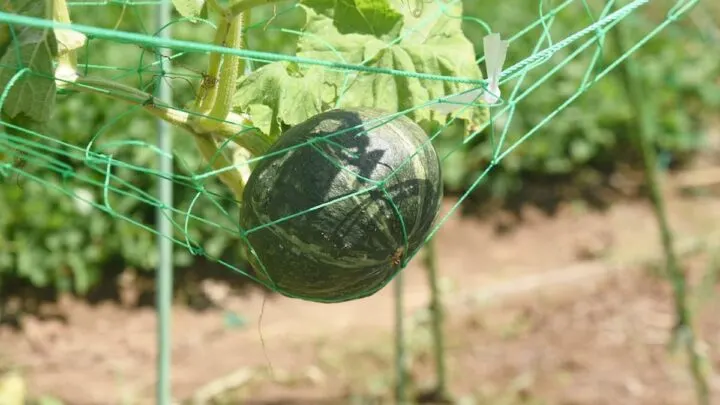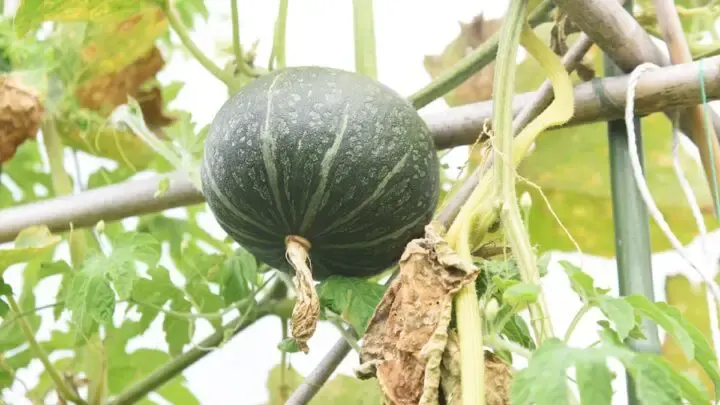Tons of money purchasing pumpkins from farms and groceries stores to carve and use as decorations around their homes. Pumpkins are also a wonderful ingredient to use in dishes, especially as a base in pie. If you decide to save money and grow your own pumpkins, you are probably still learning about them. There may be flowers on your pumpkin plants but no actual fruit. This is because your plants aren’t producing female flowers. Now you are probably wondering, why is my pumpkin plant only producing male flowers?
There are many reasons why your pumpkin plants are only producing male flowers. They might not receive enough water and nutrients to replenish them from direct sunlight. You also may have spaced your pumpkin plants incorrectly, growing them too close together. Lastly, it takes at least two weeks for female flowers to appear after the male ones.
Maybe you haven’t given your pumpkin plants enough time or are simply mistaking the female flowers for male ones. Keep reading to learn all about the difference between male and female pumpkin flowers and how to encourage female flower growth.

Why Do Pumpkin Plants Need Female Flowers?
Pumpkin plants need female flowers in order to produce fruit. Just like most reproductive systems, pumpkins need male and female parts, which are manifested in a flower form, to produce their offspring and create pumpkins. Without a female pumpkin plant flower, this process is impossible. The male pumpkins don’t bear the fruit; the females do after being properly fertilized by the male flowers.
What’s the Difference Between Female And Male Pumpkin Flowers?
Male and female pumpkin flowers look very similar. A lot of times, gardeners may think that their pumpkin plants aren’t producing female flowers when they haven’t waited long enough, or they are mistaking new growth female flowers for male ones.
If your plants only seem to be producing male flowers, then don’t worry. Give it at least two weeks and study the male and female descriptions below to decide whether or not your pumpkin plants need help in producing female flowers.
Male Flowers-
Male flowers appear first on pumpkin plants. Bees tend to be attracted to male flowers. Once they are brought to a male flower on a pumpkin plant, they will most likely add that plant to their usual rounds. They will come back often, encouraging consistent pollination.
Similar to female pumpkin flowers, male flowers grow on top of a stem and possess a bright yellow color. When it comes to fertilization and producing fruit, the male flowers are the initiators. They fertilize the females, starting the process of reproduction.

Female Flowers-
Female pumpkin flowers typically appear around two weeks after the males. The males already drew in the bees, so females are involved in pollination pretty quickly. Like male pumpkin flowers, females are bright yellow and have a stem attached.
The deciphering factor between male and female pumpkin flowers is the slightest growth that forms beneath the female flower, where it attaches to the stem. Once the male fertilizes a female flower, the small growth beneath the female will turn into a pumpkin.
Typically there are ten male pumpkin flowers for every one female flower. You may have to search to really find the females. Don’t let the big numerical difference alarm you. By now, you should be able to see the difference between a female and male flower and why it’s impossible to produce pumpkins without one or the other.
How To Encourage Female Pumpkin Flower Growth
If you have studied your pumpkin flowers and you aren’t seeing any females, you must encourage female flower growth. Below is a list of tips to jumpstart female flower growth.

- Don’t plant your pumpkin seeds or start too close together. Once the foliage grows, your plants will begin to pull nutrients and shade from one another, resulting in a lack of female flower production. Also, flowers may hide behind foliage that’s growing on the plant next to it; this will make it hard for bees to find the flowers, creating a lack of pollination. Based on the variety of pumpkins you have planted, follow the instructions for the correct spacing. Most plants need to be spaced at least 2 feet apart.
- Make sure your pumpkin plants are receiving an adequate amount of water. Excessive direct sunlight may quickly dry out your soil and plants, requiring lots of water to replenish them. On the other hand, too much water can cause your pumpkin plant roots to rot, resulting in a lack of female flower growth. If your pumpkins are exposed to severe weather, such as heavy rainfall, for an extended time, try to cover them temporarily.
- With the exception of protection from rough weather, do your best not to use netting or objects of any kind to cover or protect your pumpkins. It can be a distraction to bees and could also block their access to the flowers. Male flowers need to be accessible to encourage pollination and jumpstart the growth of female flowers. Pumpkin plants rely heavily on pollination.

Final Thoughts
In conclusion, pumpkins will not grow if they possess only male flowers and not any female ones. Pumpkin plants will not bear fruit without fertilizing the female flower with the male one. As mentioned above, the ratio of male to female flowers is around 10 to 1.
For every ten male flowers, it may be difficult to locate the female flower. Give your plants time after the male flowers grow to produce females. Before you worry about a lack of female flower growth, study the plants and search for the females.
Lastly, make sure your pumpkin plants are receiving an adequate amount of nutrients such as water and sunlight. Don’t plant them too close together; keep them easily accessible for bees to work their magic and pollinate them. With all this in mind, your pumpkin plants will produce female flowers.

Hi there, my name is Allie and welcome to my blog; GareningWithAllie!
Much of what you see written here is just our personal experiences with gardening. Along with the content I write here, there is also a unique collection of gardening topics covered by some of our close friends. I hope you find everything you read here to be helpful, informative, and something that can make your gardening journey the most lovely experience ever! With that said, Happy Gardening!
